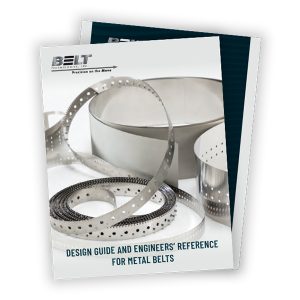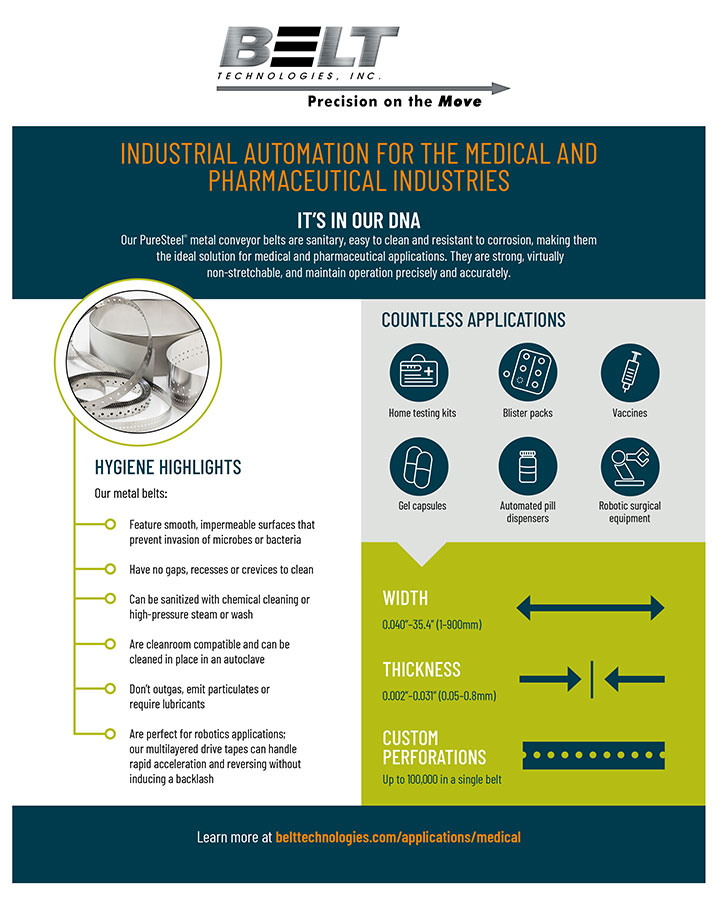A distributor recently reached out to Belt Technologies on behalf of a small manufacturer in Europe. The manufacturer operated an automated system for punching steel and aluminum sheet metal to create components for its own customers. Once punched from the sheets, the metal pieces fell onto a conveyor belt for transportation, which is why they contacted our experts at Belt Technologies.
Inadequate Belt Materials Are Short-Lived and Require Frequent Replacement
The original conveyor belt used to transport the metal fragments was made of rubber. Unfortunately, the impact from the sharp metal fragments often damaged the easily impressionable rubber belt. Frequent cuts, tears, slices, and holes in the belt meant the belt had to be replaced too often, which cost the manufacturer time and money.
Stainless Steel Is Strong and Resilient to Physical Impact
Our team worked closely with the distributor to obtain the details of the end user’s application. A stainless steel conveyor belt was clearly the best option for transporting sharp metal. Our engineers recommended a simple, solid, metal friction drive belt to catch and transport the metal fragments.
Stainless steel is robust and able to withstand impact damage and scratches. Although a stainless steel conveyor may appear more expensive in the short term, its long lifespan and resilience would help the manufacturer avoid costly replacements and downtime for maintenance.
Longer Belt Lifespan Increases Production Volume
Rubber belts are attractive for their low upfront cost, but the frequent need for replacement can become expensive. Stainless steel conveyor belts have a long lifespan, enabling manufacturers to maximize product throughput and increase overall efficiency. Our engineers strive to develop cost-effective solutions to virtually any automated system issue. For this customer, the answer was a simple switch in materials. At this point, the stainless steel belt is installed and has proven to be an excellent fix for the problem.
Would your automated manufacturing system benefit from the resilience and strength of a stainless steel conveyor belt? Contact the experts at Belt Technologies, Inc. today.



